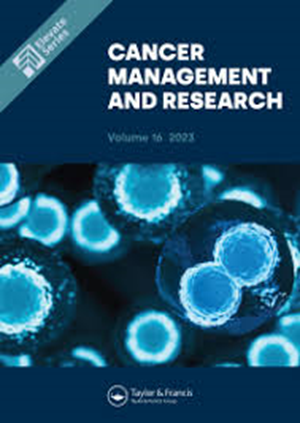Factors Predicting Treatment Adherence in Outpatients with Cancer-Related Edema: Decision Tree Analysis
IF 2.5
4区 医学
Q3 ONCOLOGY
引用次数: 0
Abstract
Purpose: This study aimed to determine the combination of factors associated with continuity of care in outpatients with cancer-related edema six months after the initial visit.Patients and Methods: A total of 101 outpatients were divided into two groups: continuation (n=65) and non-continuation (n=36) groups. Details regarding age, body mass index, sex, affected extremities (upper or lower), site of edema (unilateral or bilateral), International Society of Lymphology (ISL) classification, presence of distant metastasis, and overall score on the lymphedema quality of life questionnaire (LYMQOL) were obtained before initial lymphedema care. In this study, we performed a decision tree analysis using a classification and regression tree (CART) to detect the combination of factors associated with the continuity of edema care for cancer-related edema.
Results: Significant differences were observed in the site of edema (unilateral or bilateral) and distant metastasis between the two groups. In the decision tree using CART analysis, the factors selected to influence the possibility of continuation were the side of edema as the first layer, and body mass index of 23.0 and distant metastasis (with/without) as the second layer. Outpatients with unilateral edema and a body mass index higher than 23.0 were most likely to be able to continue care. In contrast, outpatients with bilateral edema and distant metastasis had greater difficulty in continuing care.
Conclusion: In this study, factors that were suggested to influence the continuity of cancer-related edema care were the side with edema, body mass index higher than 23.0, and distant metastasis. This information may be helpful for developing care strategies and improving patient adherence.
Keywords: cancer-related edema, continuation, decision tree analysis, outpatient, predicted factor
癌症相关水肿门诊患者坚持治疗的预测因素:决策树分析
目的:本研究旨在确定与癌症相关水肿门诊患者首次就诊六个月后持续护理相关的综合因素:共有 101 名门诊患者被分为两组:继续治疗组(65 人)和非继续治疗组(36 人)。在初次淋巴水肿治疗前,我们了解了患者的年龄、体重指数、性别、受累肢体(上肢或下肢)、水肿部位(单侧或双侧)、国际淋巴学会(ISL)分类、是否存在远处转移以及淋巴水肿生活质量调查问卷(LYMQOL)的总分等详细信息。在这项研究中,我们使用分类和回归树(CART)进行了决策树分析,以检测与癌症相关水肿护理连续性相关的因素组合:两组患者在水肿部位(单侧或双侧)和远处转移方面存在显著差异。在使用 CART 分析法的决策树中,影响继续治疗可能性的因素为:第一层为水肿侧,第二层为体重指数 23.0 和远处转移(有/无)。单侧水肿且体重指数高于 23.0 的门诊患者最有可能继续接受治疗。相比之下,双侧水肿和远处转移的门诊患者更难继续接受护理:本研究认为,影响癌症相关水肿护理持续性的因素包括水肿的一侧、体重指数高于 23.0 以及远处转移。关键词:癌症相关性水肿;持续性;决策树分析;门诊患者;预测因素
本文章由计算机程序翻译,如有差异,请以英文原文为准。
求助全文
约1分钟内获得全文
求助全文
来源期刊

Cancer Management and Research
Medicine-Oncology
CiteScore
7.40
自引率
0.00%
发文量
448
审稿时长
16 weeks
期刊介绍:
Cancer Management and Research is an international, peer reviewed, open access journal focusing on cancer research and the optimal use of preventative and integrated treatment interventions to achieve improved outcomes, enhanced survival, and quality of life for cancer patients. Specific topics covered in the journal include:
◦Epidemiology, detection and screening
◦Cellular research and biomarkers
◦Identification of biotargets and agents with novel mechanisms of action
◦Optimal clinical use of existing anticancer agents, including combination therapies
◦Radiation and surgery
◦Palliative care
◦Patient adherence, quality of life, satisfaction
The journal welcomes submitted papers covering original research, basic science, clinical & epidemiological studies, reviews & evaluations, guidelines, expert opinion and commentary, and case series that shed novel insights on a disease or disease subtype.
 求助内容:
求助内容: 应助结果提醒方式:
应助结果提醒方式:


